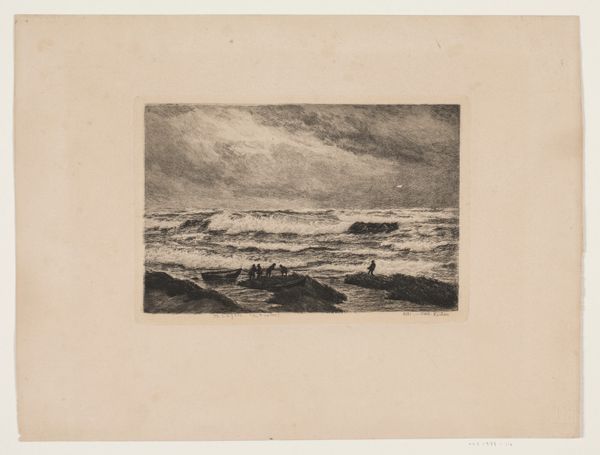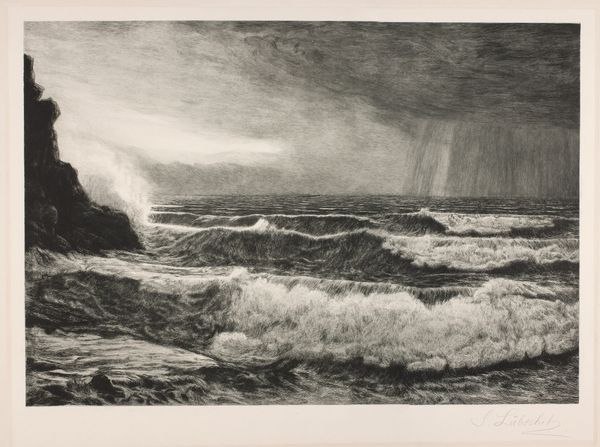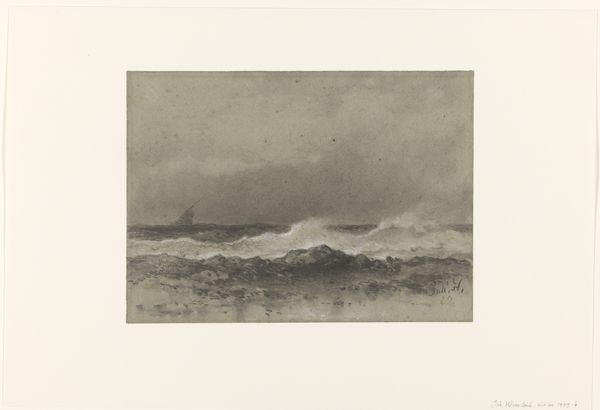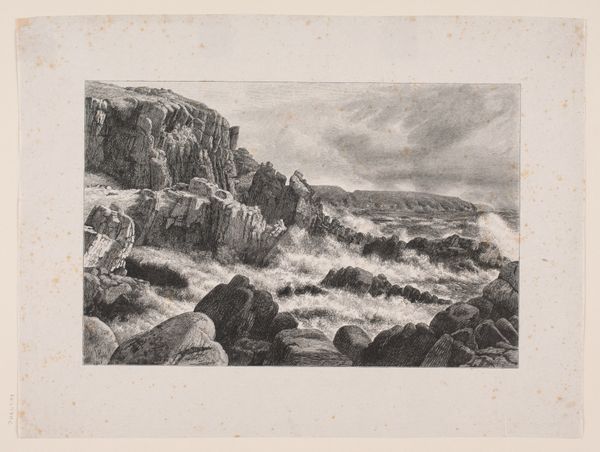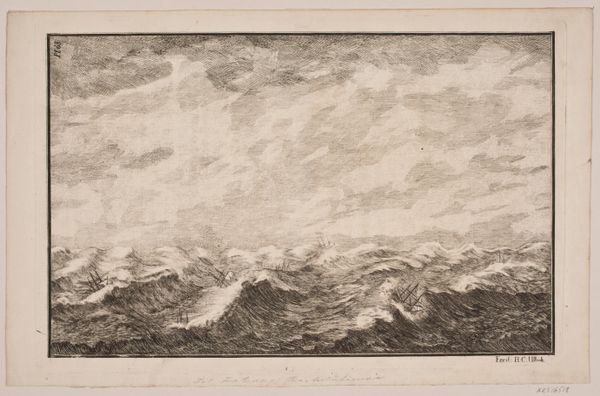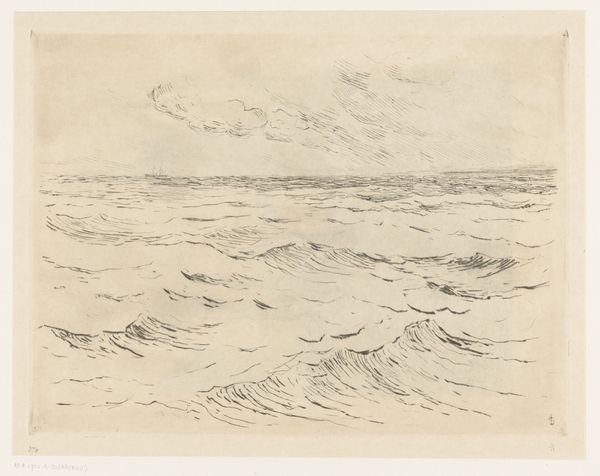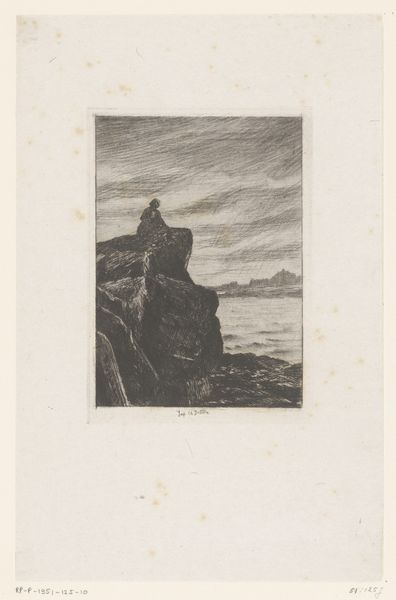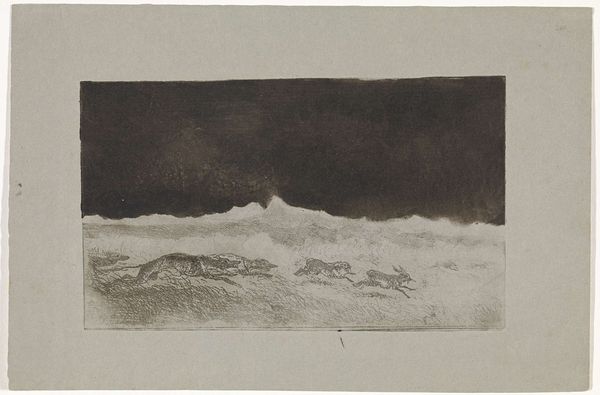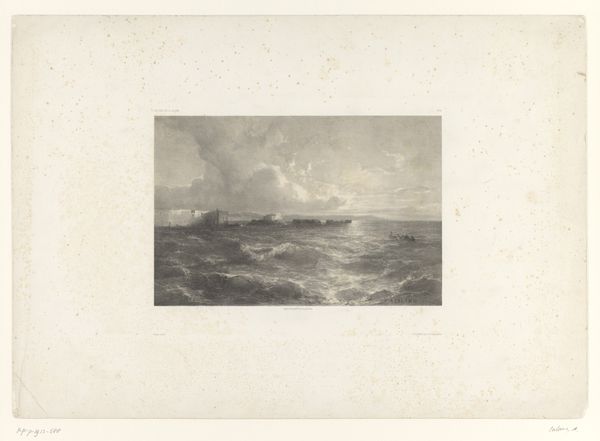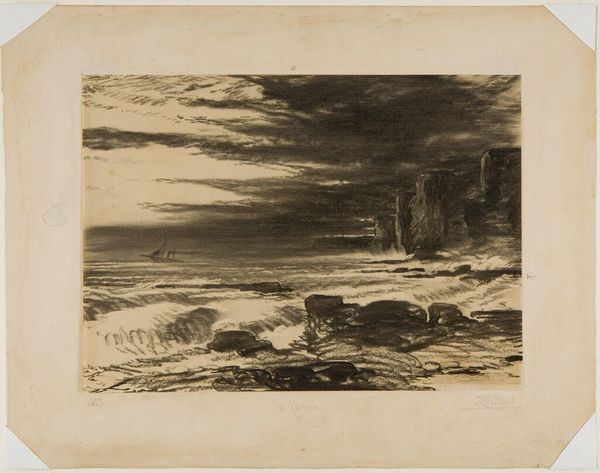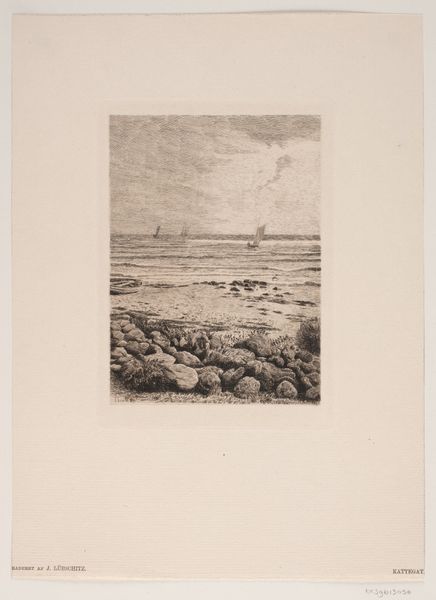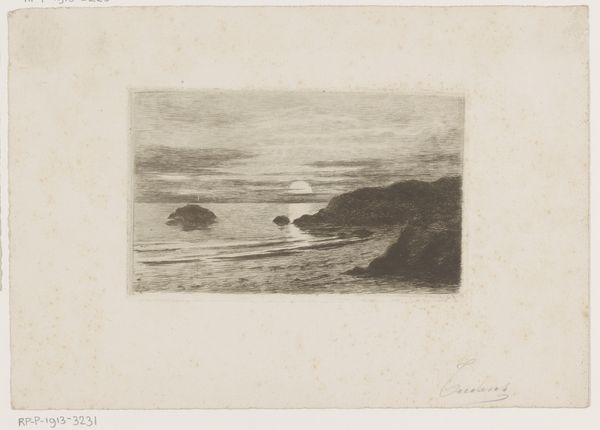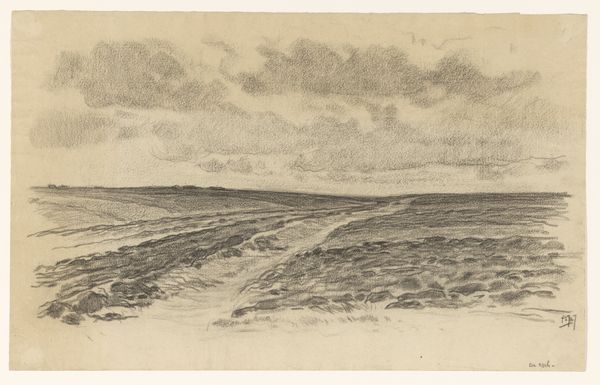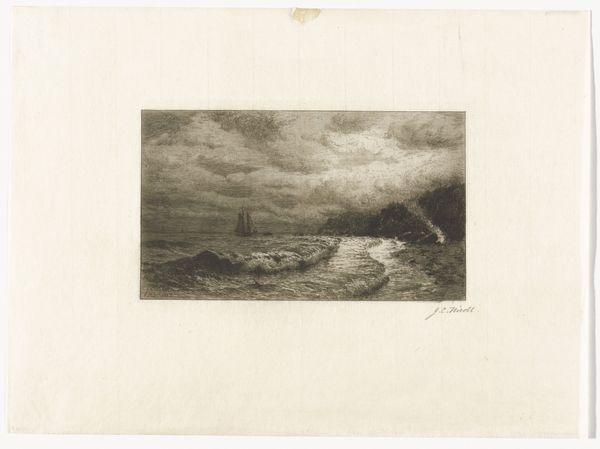
print, etching
# print
#
etching
#
landscape
#
realism
Dimensions: 137 mm (height) x 98 mm (width) (billedmaal)
Editor: Here we have "Brænding mod Klippen," or "Waves Crashing Against the Cliff," an etching by H.P. Hansen from between 1829 and 1899. The scene is powerful, almost ominous, with the dark rocks and turbulent water. How do you interpret this work in its historical context? Curator: The immediate impact of this work, with its rough seas, begs the question of who gets to depict, and who gets impacted by the powers of nature. Historically, depictions of untamed nature served to contrast an idealized humanity. I am most interested in whose story is ignored in the foregrounding of landscape. Who labored on that shore? Whose resources are shipped on that sea? Editor: That’s a perspective I hadn’t considered. I was more focused on the romantic idea of nature's power, especially as expressed through the Realism movement. Curator: And that’s a valid reading. But, consider also the time period. Realism coincides with rapid industrialization, a time where nature was becoming something to be conquered, dominated. Even the idea of experiencing a sublime moment becomes entangled with colonialism and resource extraction. Who owned the rocks on this shore and what was their access to representing their interests through the act of artmaking? Editor: So you're saying that even landscapes, seemingly neutral, can be seen as reflections of social and economic power structures? Curator: Precisely. We must critically examine the narratives promoted and, more importantly, who is being excluded from them. Do you notice the lack of human figures? Where did the people go? How are we implicated in the image when no figures present themselves? Editor: I see your point. It definitely changes my perception of the artwork. It pushes us to think beyond just the aesthetic to the deeper socio-political implications of the image. Thank you! Curator: Absolutely. By engaging with these questions, we invite richer, more meaningful discussions about the intersection of art, history, and society.
Comments
No comments
Be the first to comment and join the conversation on the ultimate creative platform.
